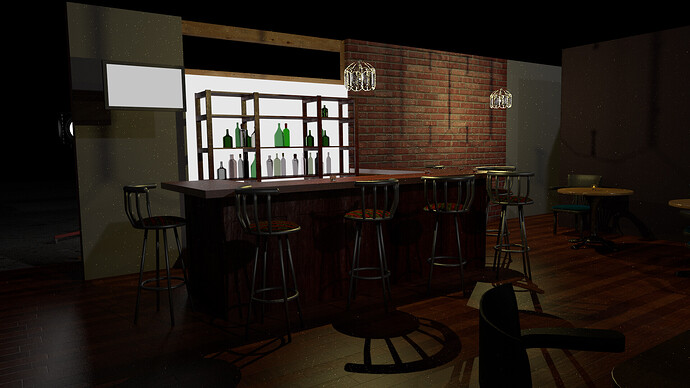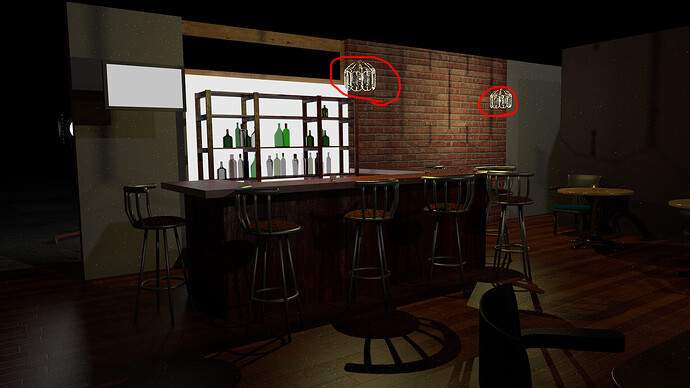Hmmm… this might also be a situation where you’re fighting a battle of diminishing returns. Nevermind the speckles in the glass, what about the improbable shadows being cast upon the walls? Visually, do you really want that? If not, then you really don’t need to be computing it. There are both odd-shadows and blobby “goobers” on all the walls … where do those come from, and how much time is it taking the computer to calcualate (what you probably very-much don’t want)?
If this scene is only going to be seen from this camera POV, then you can fairly get away with murder here, and that’s exactly what I would be doing. Composite the hell out of it. Use BI. Even posters made from photographs of appropriate lamps, hung on planes facing the camera. (Or, very simple geometry, with an added pass to generate what actually makes it look like glass, which is a slight desaturation and opaqueness where the reflections are.) A flat-plane texture and bump-map for the bricks. Shoot barstools in isolation, and whatever’s behind them separately. And so on and on. (Using MultiLayer OpenEXR for all files.)
This will then allow you to do, “in post,” what would otherwise be the most vexing problem of a shot like this: getting the relative light-levels right. For example, now you can “shoot” the front of the bar with more light, so that it renders with clearly-definable levels (less “mud”), then remap the RGB to produce a “dimly lit” version of the same thing (with whatever color-cast you think looks good), that will turn out to be much sharper. The ol’ “burning and dodging,” digitized.
The shadows, too. The shadows cast by the #3 and #5 bar-stool are critical compositional elements to the shot. (But, uhh, #4 and #1 don’t seem to be casting any.) The color and density of those shadows, exactly where they fall and so-on, need to be something that you can “tweak” to your heart’s content without re-rendering. They also need to be something that you can adjust independently of any light source, ergo they need to come from a shadow source, in their own isolated channel.
It would be incredibly difficult to capture that shot all-at-once on a piece of film, although I have seen it done. Ditto with CG, if corresponding methods are used. Therefore, cheat.
At first blush, this seems like “a lot more work,” but it pays-off hugely at the end when you are not re-rendering, and when you’re working-out difficult light-level compromises using, as it were, a mixing-console.

